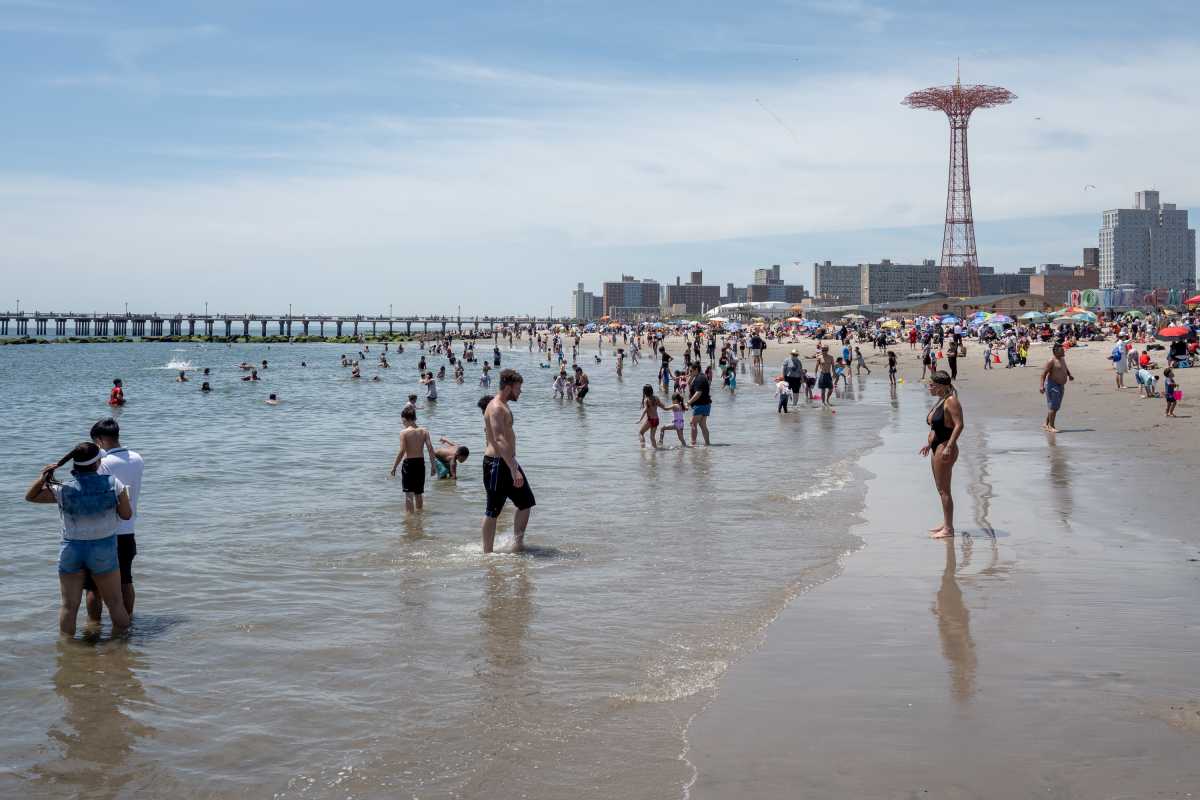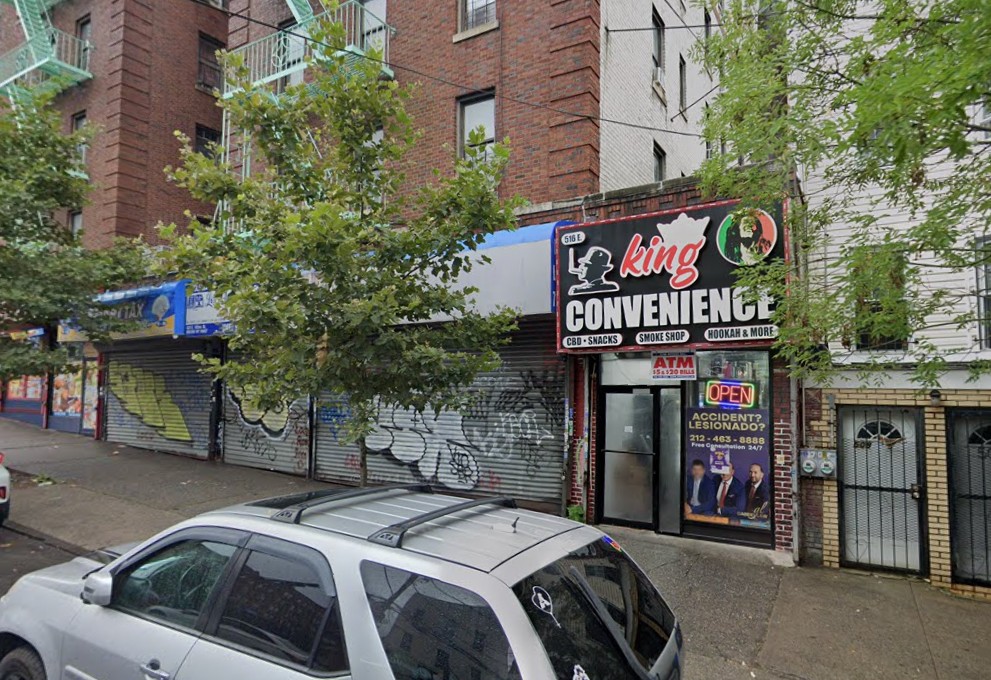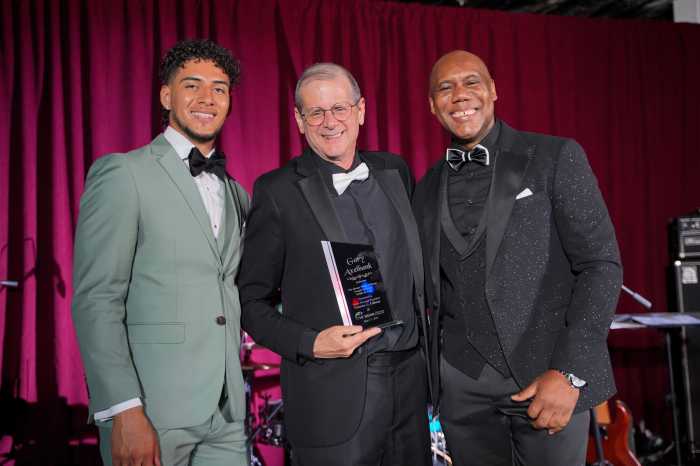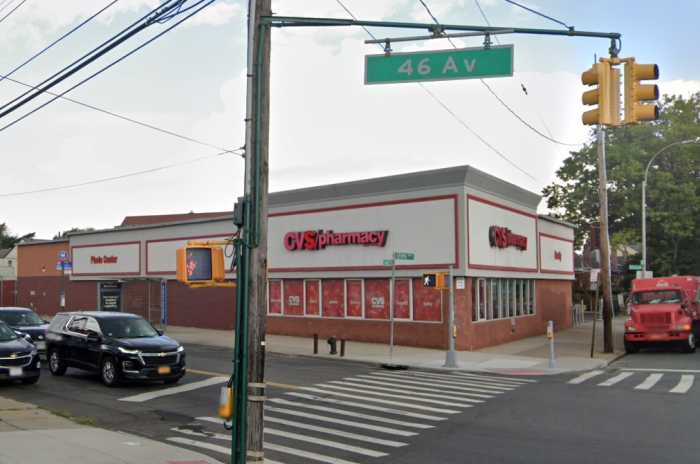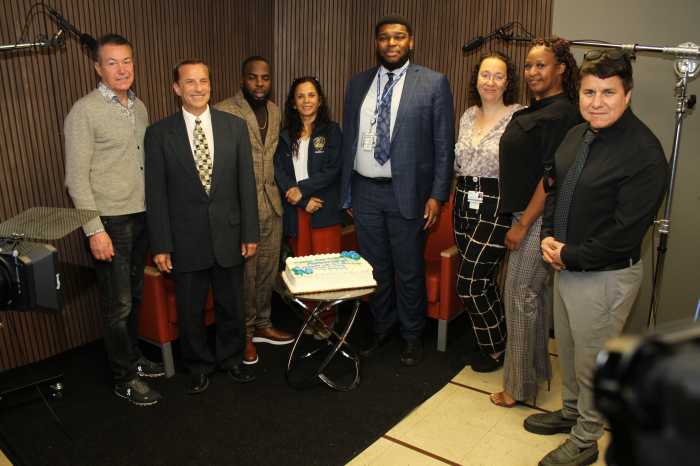Koch twists Cindy’s words
To The Editor:
Re “Cindy’s rhetoric isn’t right: It’s extreme left” (talking point, by Ed Koch, Oct. 5):
Edward Koch’s article suffered from poor fact-checking.
Mr. Koch wrote: “…how can Cindy Sheehan’s supporters defend her shameful statement, ‘This country is not worth dying for’?”
That’s easy — clearly Mr. Koch has been getting his news from right-wing Web sites putting a spin on Mrs. Sheehan’s words by taking statements out of context. Koch never directly says Sheehan meant America was not worth dying for but clearly that is what he is suggesting. However, that is demonstrably false. A quick Google search shows that Cindy Sheehan said Iraq was not worth dying for — not America. Not only that but Mrs. Sheehan said that if America were attacked she would fight with a rolling pin if she had to, but that Iraq did not attack us.
What Sheehan actually said was: “I’m going all over the country telling moms: ‘This country is not worth dying for. If we’re attacked, we would all go out. We’d all take whatever we had. I’d take my rolling pin and I’d beat the attackers over the head with it. But we were not attacked by Iraq.’”
I think in the interest of honesty your publication owes its readers a correction of Koch’s misleading statement.
Nicholas Merrill
Keep Koch on film, only
To The Editor:
Re “Cindy’s rhetoric just isn’t right: It’s extreme left” (talking point, by Ed Koch, Oct. 5):
Lo and behold! Although I had to hold my nose, I found something to agree with in Ed Koch’s talking point.
“We should declare victory and get out [of Iraq].” Hurrah for Ed!
“The estimates provided by the Bush administration on our getting out range from two to 10 years…. We should get out now, leaving the U.N. in charge.” Bravo!
Please, Villager, can you confine Mr. Koch to his movie reviews. His 16 years as mayor were tainted with his prostitution to the real estate industry. The lack of affordable housing is, in part, his fault.
I would like to praise Arthur Y. Webb’s column, “Hurricane Katrina, a metaphor for those left behind in society,” on Page 19 in the same issue.
Michael Gottlieb
Barge recalls breakthrough
To The Editor:
Re “Just like any other barge, only this one has bark and leaves” (arts article, Sept. 21):
Having enjoyed the sight of the “Floating Island” sailing past West Village piers recently, I was glad to see the photo and article in the Sept. 21 Villager. I was especially interested in the remarks of Nancy Holt, widow of the artisit Robert Smithson: “Bob and I used to live on W. 12th and Greenwich Sts….”
And therein lies a story — a story about an innovative experiment that proved to be a breakthrough for artists housing. The year was 1963. Then a Democratic district leader, I was contacted by real estate broker Ann Lye about two loft buildings taken over by the city because of tax liens. She suggested forming a group to try to develop spaces where artists could live and work. I might add that Ann was married to Len Lye, noted avant-garde filmmaker and pioneer kinetic sculptor. (No one who ever saw Len put on a “show” in his West Village studio of his undulating metallic works, activated by motors, will ever forget that exhilarating experience.) Others in our group included activist Rachelle Wall, married to artist Leon Wall, lawyer Wally Popolizio and artist Ruth Richards.
Because the buildings were zoned for manufacturing, it was then not legal to do residential conversions, although two artists-in-residence (AIR’s) were permitted in loft buildings, provided that appropriate signs were posted outside so firefighters would know where to locate people, in case of fire. One can occasionally still see some of these faded signs. We enlisted the aid of then Assemblymember Jerry Kretchmer, who introduced the legislation making it possible to have studio-residences for artists in loft buildings. With seed money from the J. M. Kaplan Fund, we proceeded to work with various city agencies to make the necessary alterations and complete the conversion. Jack Kaplan took personal interest in the project, and was a lively presence at many of our meetings, some with the artists selected for the 12 units we provided.
Our Committee for Artists Housing did yeoman’s work in this field, and our example, plus the enabling legislation, made it easier later for others to develop Westbeth and Soho.
One closing sidebar — our committee held its first meeting with city officials to present our proposal in the then City Administrator’s office on Church St., near City Hall. It was such a beautiful late November day, that I decided to walk back to the Village. When I reached home I called Mary Nichols, then a reporter for the Village Voice, to tell her about our meeting. “Put your radio on,” she told me. “President Kennedy has been shot.” And that’s how I can always remember when we began working for artists housing.
Carol Greitzer
Witnesses watch for abuse
To The Editor:
Re “Witness policy fosters abuse” (letter, by Danny Haszard, Oct. 5):
I wish to respond to Danny Haszard’s comments in which he alleges that sexual abuse is rampant among the Jehovah’s Witnesses due to their policy of requiring “two witnesses” to crime of child abuse. He is wrong in several points.
The incidence of child sex abuse among Jehovah’s Witnesses is no higher than other religious group. In fact, the incidence may be lower due to the Jehovah’s Witnesses strict policy of disciplining and disfellowshipping unrepentant abusers. Jehovah’s Witnesses is the only major religious Christian group that disfellowships or excommunicates those who practice immorality and other sins, including the abhorrent practice of pedophilia. Most other groups don’t. We know, for instance, that in many cases when Catholic clergymen confessed that they were pedophiles, they were just given counseling and then just transferred to another parish. Jehovah’s Witnesses, while encouraging any wrongdoer to repent, will disfellowship anyone who does not repent. In their case, they follow the apostle Paul’s command to “remove the wicked man from among yourselves” (“1 Cor. 5:9-13”).
Jehovah’s Christian Witnesses were the first religious group to have a policy banning anyone from a teaching position in the congregation if he has a history of abusing children.
True, they follow a biblical law of “two witnesses,” as the book of “2 Corinthians” explains, any accusation must be upheld by the evidence of two or more witnesses. However, if one denies the act, the elders or the parents are urged to report it the authorities. Jehovah’s Witness elders are instructed to report the accusation immediately where state law requires it. And, unlike some published reports stating otherwise, the parents or the abused one may go to the police to report it, in many cases at the elders’ urging. Elders will accept as a second witness any DNA evidence. So if the wrongdoer claims to be innocent, but there is DNA evidence as a second witness, he or she will face excommunication from the Christian congregation. Or if during a court proceeding, he or she finally confesses, he or she may face disfellowshipping.
In short, it is just not true that cases of child abuse among the Jehovah’s Witnesses are rampant. In fact, the incidence of child abuse may be much lower among the Christian Congregation of Jehovah’s Witnesses than other groups since they follow the biblical command to disfellowship or expel wrongdoers, unlike the most religious groups. The Amish are perhaps the only other group that follow the command of “1 Cor. 5:8-13.” Also, Witness policy encourages reporting cases to the police and/or other authorities.
David Lopez
Teen lounge is a mistake
To The Editor:
I frequent the Jefferson Market Library, and I am deeply distressed that the reference room there should be turned into a teen lounge. This would be damaging equally to both teens and adults.
There are always complaints in this library that there is not enough room to keep and store books and also there is a constant demand there for help and services, especially in the reference room, including a constant demand from teenagers. To turn the reference room into a teen lounge would thus thwart and frustrate everyone. Should the reference section be moved upstairs and the reference room would be unbearably crowded and short of materials. The reference resource room would no longer be a resource, a quiet place for those who want to do research, study and read. The neighborhood has few such places open to the public.
In addition, the library, which should be open all day, closes for a good part of the day, and early most evenings. Is this the way to promote literacy? Why is the U.S.A. falling behind many other countries in this area? It is a good thing to have recreational centers for teenagers, but many other more suitable possibilities exist for this, for instance, the sports building at Carmine St., Greenwich House and the many houses of worship in the neighborhood.
Do not take the scarce space from Jefferson Market Library, nor from any branch library. Teenagers need to be brought up to respect books and reading, to respect the need for quiet, to respect the library. Do not take this place and these places away from them, and away from us, the reading, research-minded public.
Elaine R. Abse, M.S.W.
Abse is a child guidance specialist
Obituaries are valuable
To The Editor:
Re “Yuri Kapralov, a ‘grandfather’ of E.V. counterculture” (obituary, Sept. 21):
I just read the obituary of Yuri Kapralov in the 9/21 issue, and, besides being interesting to me since he was a Russian émigré of my parents’ vintage, the article illuminated another aspect of the history of the Village — East and Greenwich. This is not the first time I discovered aspects of this history in The Villager’s obituaries. And as I wished I had clipped some I now have imprecise memories of, it dawned on me that you have a book here — the history of the Village through these multifaceted obituaries. It should not try to be a complete history, or even need much editing — just choosing the right ones, and in some cases, adding some update (such as subsequent publication of, say, an artist’s catalog). You should do this! It will be an important contribution to New York culture and will publicize and memorialize lives and events that could otherwise disappear into just some scrapbooks and librarian’s files.
Alexandr Neratoff
Send letters to the editor,
preferably by e-mail, to news@thevillager.com. Please include your phone number for verification purposes only. Letters can also be faxed to 212-229-2790 or mailed to The Villager, 487 Greenwich St., Suite 6A, NYC, NY 10013. The Villager reserves the right to edit letters.












